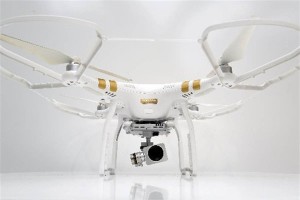GA safety
EAA MAINTAINS IMPORTANCE OF GENERAL AVIATION AND SAFETY IN COMMENTS TO FAA ON AMAZON PETITION
Retailer seeking regulation exemption to begin unmanned drone deliveries
EAA AVIATION CENTER, OSHKOSH, Wisconsin — (September 3, 2019) — GA Safety for manned aircraft, not commercial expediency, must be the priority for federal air regulators as they consider an exemption application by Amazon regarding package deliveries by unmanned aerial systems (UAS), noted the Experimental Aircraft Association in formal comments to the Federal Aviation Administration.
EAA made the comments in response to Amazon’s petition to the FAA that requested relief from certain rules in order to conduct deliveries by UAS, commonly known as drones. The exemption would allow Amazon additional freedom to operate below 400 feet above ground level (AGL) without the line-of-sight observation requirements for UAS operations.
“There is an asymmetrical challenge to safety as UAS flights are integrated into the national airspace, as the priority must be preventing hazards to people in the event of a collision over threats to unmanned machinery,” said Sean Elliott, EAA’s vice president of advocacy and safety, “EAA is not opposed to integrating unmanned systems into the airspace, as long as they observe appropriate safety protocols and do not lead to additional regulations and mandated equipment for manned aircraft. In addition, manned aircraft must have the right-of-way in all circumstances.”
In addition to reaffirming EAA’s long-standing position on UAS integration, the organization’s comments give specific examples of various types of flying that takes place on a regular basis below 400 feet AGL, where Amazon intends to operate. Those operations include ultralight vehicles, private airports and helipads, emergency medical flight operations, backcountry flying, seaplanes, and flights over open water or sparsely populated areas. This affirms the need for extremely reliable sense-and-avoid technology aboard unmanned systems that can detect any and all manned aircraft.
“While we are pleased that Amazon stated in its petition that it must demonstrate an equivalent level of safety to ‘see-and-avoid’ principles of manned aircraft, we urge the FAA review and confirm Amazon’s risk assumptions are accurate and its redundancy procedures are as vigorous as those for manned aircraft,” Elliott said. “It is the responsibility of every entity using the airspace to maintain the equivalent safety standards as we explore the opportunities and benefits of this new technology. The stakes are too high for any alternative to be acceptable.”
About EAA
EAA embodies The Spirit of Aviation through the world’s most engaged community of aviation enthusiasts. EAA’s 225,000 members and 900 local chapters enjoy the fun and camaraderie of sharing their passion for flying, building and restoring recreational aircraft. For more information on EAA and its programs, call 800-JOIN-EAA (800-564-6322) or go to www.eaa.org. For continual news updates, connect with www.twitter.com/EAA.

